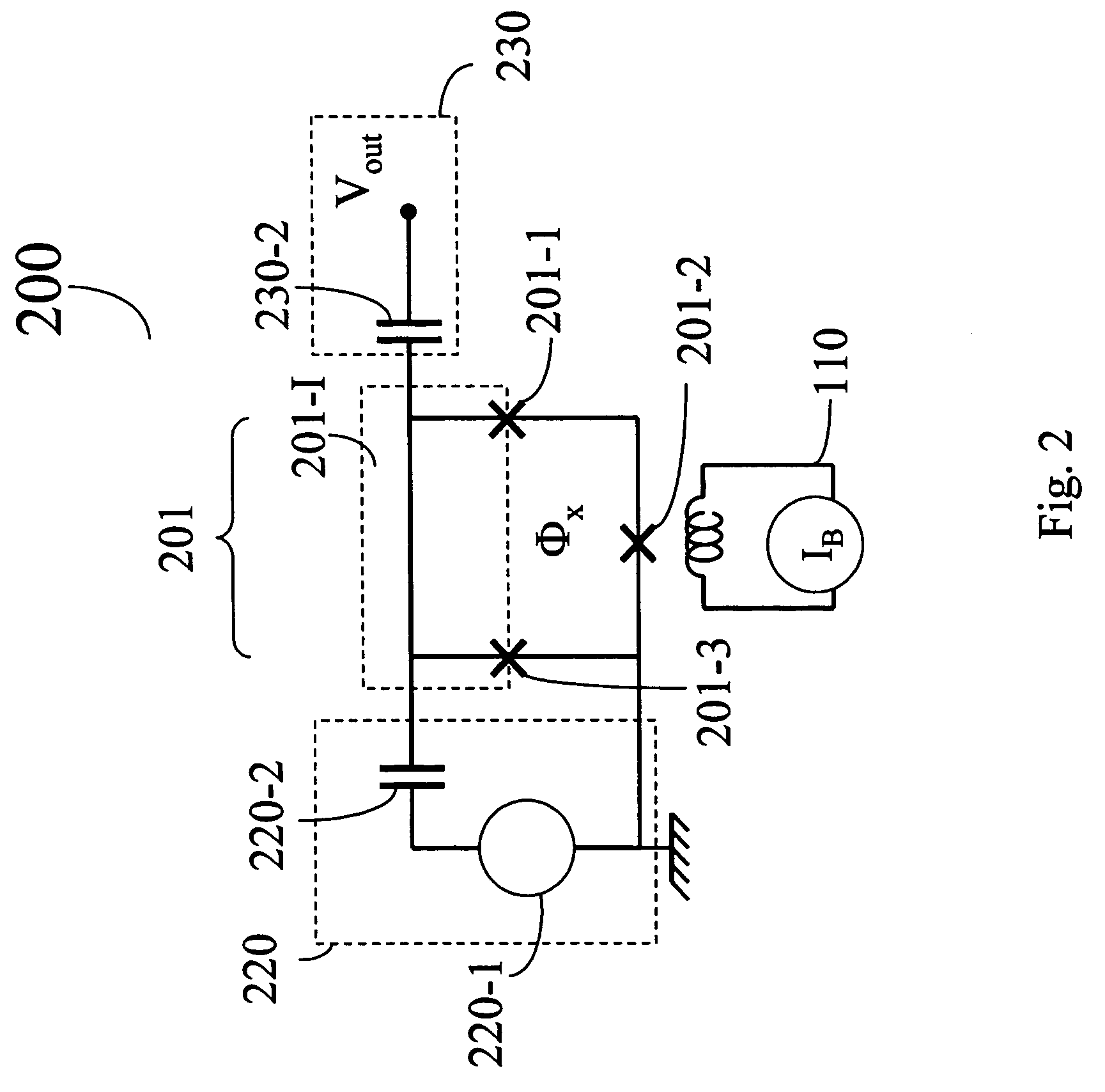Superconducting phase-charge qubits
a phase-charge qubit and superconducting technology, applied in the field of quantum computing, can solve the problems of poor (short) decoherence time, stringent control parameter requirements, and identification of systems that can support quantum computation
- Summary
- Abstract
- Description
- Claims
- Application Information
AI Technical Summary
Benefits of technology
Problems solved by technology
Method used
Image
Examples
Embodiment Construction
[0059]In accordance with the present invention, a structure and method for detecting and controlling the quantum state of a superconducting phase-charge qubit is described in which the state of the phase-charge qubit can be controllably localized in the phase basis or the charge basis. In some embodiments of the present invention, localization in the charge basis provides a detectable quantity that can be used to measure the state of the phase-charge qubit. In particular, the detectable quantity is the charge of an island of the phase-charge qubit. Furthermore, localization in the charge basis can be used to entangle the states of different qubits in a controllable manner. The phase-charge qubits of the present invention differ from the hybrid charge-phase qubits of Vion et al. The hybrid charge-phase qubit of Vion et al. are in fact charge qubit structures that can operate in the charge or phase regime. See, Vion et al., 2002, Science, 296, 886, which is hereby incorporated by refe...
PUM
 Login to View More
Login to View More Abstract
Description
Claims
Application Information
 Login to View More
Login to View More - R&D
- Intellectual Property
- Life Sciences
- Materials
- Tech Scout
- Unparalleled Data Quality
- Higher Quality Content
- 60% Fewer Hallucinations
Browse by: Latest US Patents, China's latest patents, Technical Efficacy Thesaurus, Application Domain, Technology Topic, Popular Technical Reports.
© 2025 PatSnap. All rights reserved.Legal|Privacy policy|Modern Slavery Act Transparency Statement|Sitemap|About US| Contact US: help@patsnap.com



